How to Talk to Kids About Difficult Topics: Practical Tips and Book Recommendations
- Whole Child Counseling
- Aug 2
- 26 min read
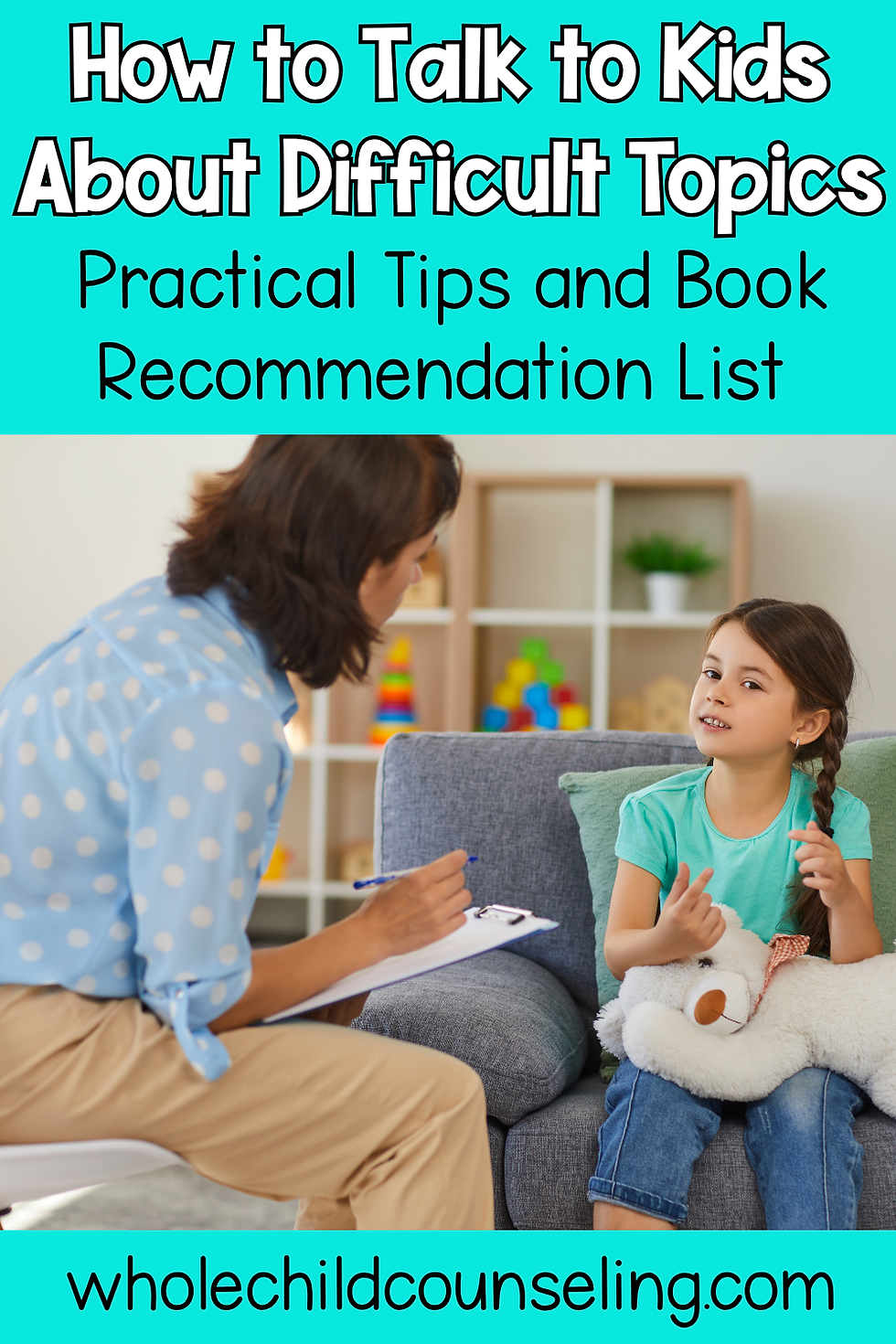
Some conversations are hard but they’re also essential. Whether you're a teacher, school counselor, or parent, you know that kids face big feelings and complex situations. In this blog post I'll share tips and books for how to talk to kids about difficult topics whether they are including:
A family member with a chronic illness or cancer
An incarcerated family member
A family member with Alzheimer's or Dementia
A parent's separation or divorce
The death of a loved one, grief, and loss
School shootings and community violence
Racism
Natural disasters
Domestic violence
A family member with substance abuse or addiction problem
A family member with a mental illness
Military deployment
Moving to a new school
When kids are talking about sensitive or tricky topics, they need trusted adults who are willing to talk, listen, and offer support, even when the topic feels tough.
Books can be such a powerful tool in these conversations. They open doors to empathy, understanding, and emotional healing. This guide shares practical tips, talking points, and children’s book recommendations for talking to kids about difficult life experiences. Each section includes what to say, how to say it, and which books can help.
Before we dive in, I have to share a favorite book.
If there’s one book I recommend every parent, teacher, or counselor keep on hand, it’s A Terrible Thing Happened by Margaret Holmes.
This story follows Sherman, a raccoon who witnessed something scary. The event itself is never named, which allows children to connect the story to their own unique experiences whether it's trauma, loss, or confusion. It opens the door for kids to talk, ask questions, and understand that it’s okay to seek support from a trusted adult.
I’ve turned to this book again and again in my career. It’s incredibly versatile, non-threatening, and compassionate and perfect for starting conversations about hard-to-name feelings and tough topics.
Talking to Kids About a Family Member's Serious Illness (Cancer or Chronic Illness)
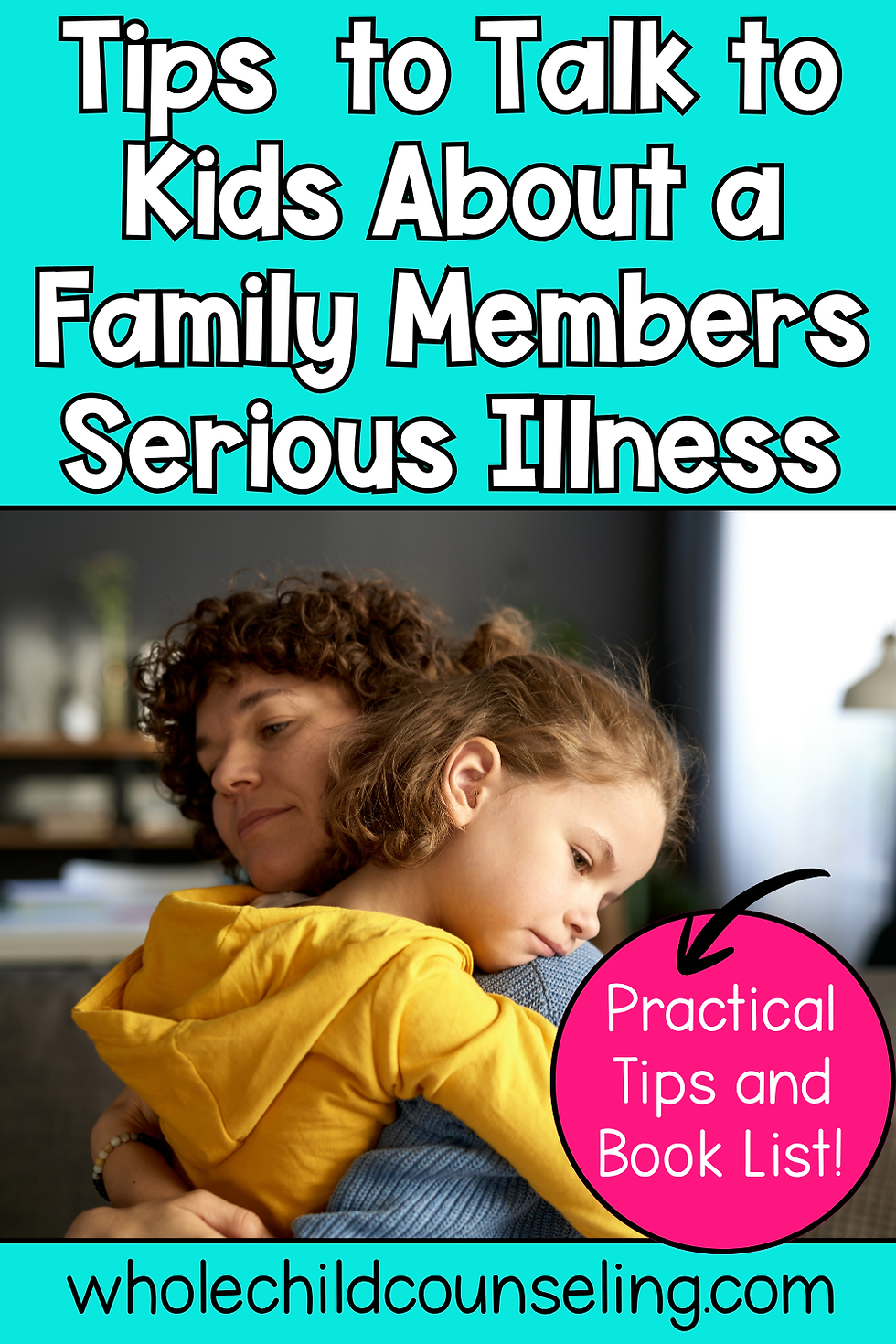
When a child has a loved one going through a serious illness, it is important to be open without being overwhelming. Use clear language that matches their developmental level. Avoid vague terms like "sick" and instead use specific words such as "cancer" or "a disease called..." to reduce confusion and fear. Children may worry that they caused the illness or that they will catch it, so it is important to reassure them that this is not the case. Make space for their emotional responses and provide consistency through daily routines, which can be comforting.
What kids with family members who have cancer or chronic illness need to hear:
“Your mom has an illness called cancer. That means her body is sick and needs medicine to fight it.”
“It’s okay to feel scared or confused. I’m here to answer your questions.”
“You didn’t cause this, and there’s nothing you did to make it happen.”
“Even when people feel sick, they still love you very much.”
“You can always ask me anything, even if it feels hard or scary to say out loud.”
“There will still be lots of moments to laugh, play, and be together, even during treatment.”
Tips for telling kids about a family member having cancer or a chronic illness:
Use simple, honest language (“Mom has a disease called cancer” instead of “Mom is sick”)
Reassure children it’s not their fault and they can still ask questions
Allow space for emotions like anger, confusion, or sadness
Keep routines where possible
Kids books that talk about family members having cancer or chronic illnesses:
Nowhere Hair by Sue Glader: This rhyming book helps young children understand why a loved one may lose their hair during cancer treatment. It combines humor and honesty, easing fears and inviting questions in a gentle, relatable way.
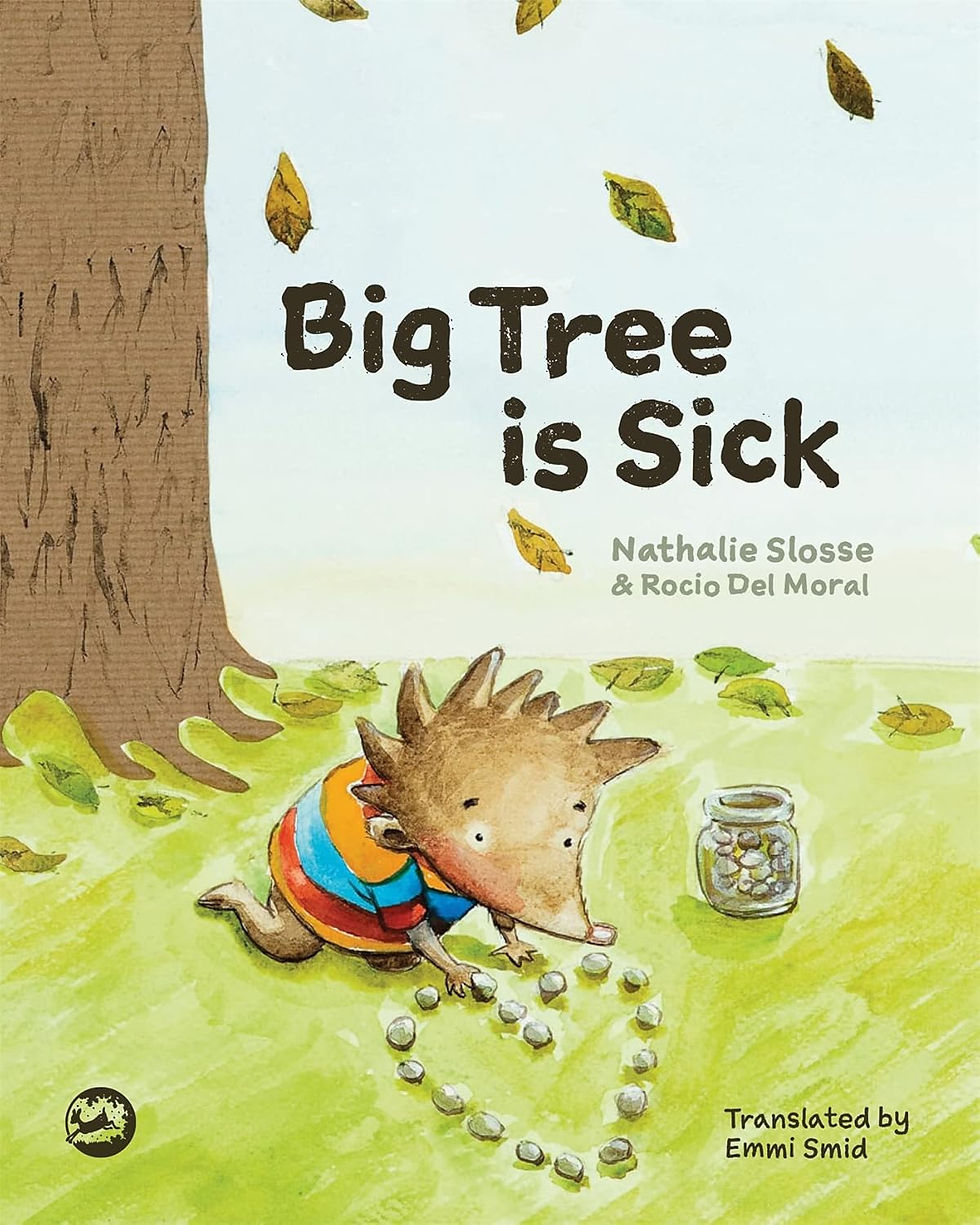
Big Tree is Sick by by Nathalie Slosse: is a gentle, metaphorical story about a beloved tree in the forest who becomes seriously ill and must go to the “Tree Hospital.” Told through the eyes of Snibbo the snail, the book helps children understand and cope with the illness of a loved one by exploring emotions like fear, confusion, and sadness in a compassionate and age-appropriate way.
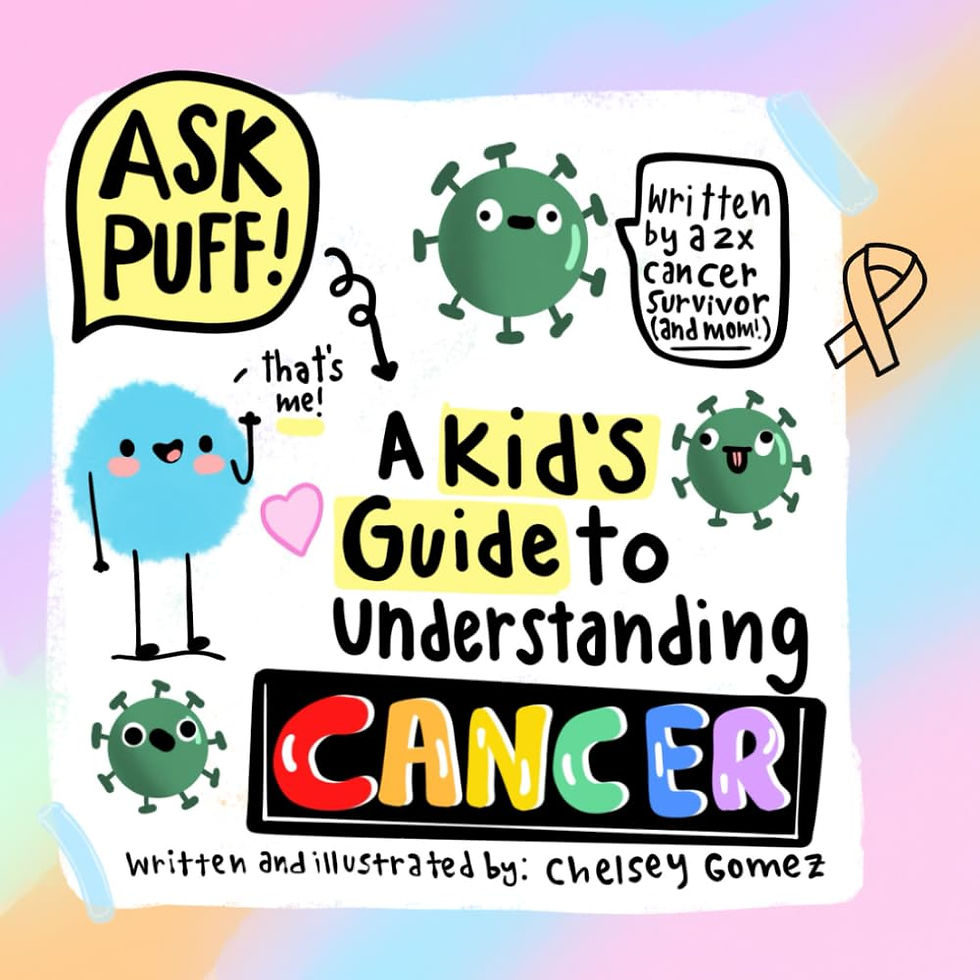
Ask Puff! A Kid’s Guide to Understanding Cancer: by Chelsey Gomez is an engaging, accessible book that helps children make sense of cancer in a non-scary way. Narrated by “Puff,” a cheerful and curious blue puffball, the book explains what cancer is, how treatments work, and how kids can cope when someone they love is sick. Written and illustrated by a two-time cancer survivor and mom, it uses clear language, fun visuals, and relatable emotions to support young readers with honesty and hope.
What Happens When Someone I Love Has Cancer by Sara Olsher is a comforting, straightforward guide for children navigating the uncertainty of a loved one’s cancer diagnosis. The book explains what cancer is, what treatment might look like, and how routines and feelings may change. It offers reassurance while helping kids understand that their questions, fears, and emotions are completely normal.
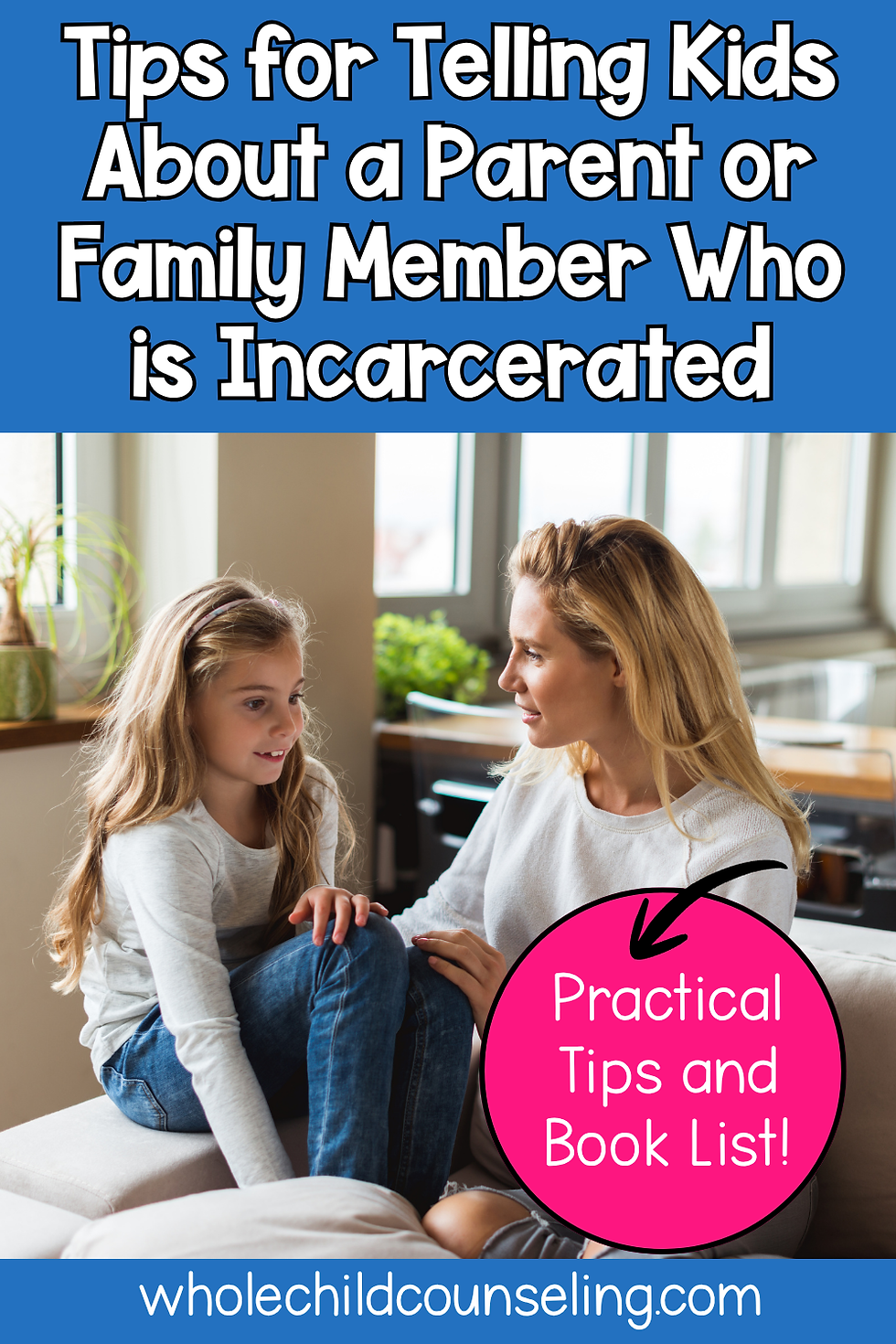
Talking to Kids About an Incarcerated Parent or Family Member
Having a parent or caregiver incarcerated can be deeply confusing for children. It is important to be honest, but careful not to overwhelm them with too much detail. Avoid using language that could add shame or judgment. Reassure children that they can talk about their feelings and ask questions. If appropriate, photos, drawings, letters, and visits can help them maintain a connection.
What kids with a parent or family member who is incarcerated or in jail need to hear:
“Your dad is in a place called jail. That means he made a choice that broke the law, and now he has to be there for a while.”
“You are not responsible for what happened.”
“It’s okay to feel sad, mad, or even embarrassed. You can talk to me about any of it.”
“Your dad still loves you, even if he can't be here right now.”
“You are not alone. Lots of kids have a parent who can’t live with them right now.”
“You are still part of a family, and nothing changes how special and important you are.”
Tips for telling kids about a parent or family member who is incarcerated
Be truthful without overloading details
Avoid shaming language
Let children know they can talk about their feelings
Use pictures, visits, and letters when possible to stay connected
Kids books that talk about a parent or family member's incarceration
Visiting Day by Jacqueline Woodson: This story follows a young girl as she prepares for one of her most special days when she travels with her grandmother to see her father in prison. Readers experience the excitement, anticipation, and emotional complexity of reconnecting with a loved one behind bars. The book celebrates the enduring bond between parent and child and offers a hopeful look at maintaining love and connection during separation.
Mama Loves Me from Away by Pat Brisson: Told through the voice of a young girl writing letters to her mother, this gentle, lyrical book offers comfort to children whose mothers are incarcerated. The story emphasizes the unwavering love between mother and child, despite their physical distance. Through the letters and Mama’s responses, the book explores everyday moments, shared memories, and small acts of connection that reassure the child she is not forgotten.
Our Moms by Q. Futrell and A. Cross: Created by authors with lived experience, this book features a group of children sharing their unique stories of having incarcerated mothers. The narrative focuses on resilience, honesty, and emotional expression while showing that no two stories are the same. The book tackles themes like confusion, sadness, anger, and hope. It also serves as a reminder that children with incarcerated parents are not alone and that their experiences matter. This book is especially important for children in need of representation and reassurance in difficult family circumstances.
My Daddy’s in Jail by Anthony Curcio: This playful yet honest book uses colorful cartoon characters and child-friendly humor to help young readers understand the confusing reality of having a parent in jail. It follows a young crab character who talks about the emotions and questions that come with their father's incarceration. Designed to open up dialogue, the book covers feelings like sadness, confusion, anger, and embarrassment in a non-threatening way while reinforcing that kids are not to blame. It also includes helpful prompts and discussion points for caregivers and counselors.
Far Apart, Close in Heart: Being a Family When a Loved One Is Incarcerated by Becky Birtha, illustrated by Maja Kastelic: This book gently explores the experiences of children whose family members are in jail or prison. It shares the voices of multiple kids, each dealing with incarceration in a different way—from writing letters and missing holidays to navigating shame and questions from peers. The compassionate tone and realistic portrayals help validate children’s feelings while sending a clear message: love and connection can still exist, even across distance and bars.

Talking to Kids About Alzheimer’s Disease or Dementia
Explaining memory loss to a child can be challenging. Use developmentally appropriate explanations such as "Grandpa’s brain is having trouble remembering things." Let children know they are not being forgotten and encourage them to share positive memories or do simple activities together. Sometimes helping with small caregiving tasks can give children a sense of connection and comfort. This blog post is also full of great tips for talking to kids about Alzheimer's disease or dementia.
What kids with a family member with Alzheimer's or Dementia need to hear:
“Grandpa’s brain is having trouble remembering things. It’s called Alzheimer’s.”
“Sometimes she might say silly things or forget your name, but it’s not because she doesn’t love you.”
“You can still tell him stories, sing songs, or show him your drawings. That can help both of you feel close.”
“It’s okay to feel confused. You’re not alone.”
“Even if she forgets something, the love you’ve shared is still in her heart.”
“It’s okay to ask questions or take breaks if it ever feels like too much.”
Tips for talking to kids about a family member with Alzheimer's or Dementia
Explain memory loss in developmentally appropriate ways
Reassure children it’s not about them being forgotten
Encourage them to share positive memories
Let them help in small caregiving ways if appropriate
Kids Books About Alzheimer's Disease and Dementia
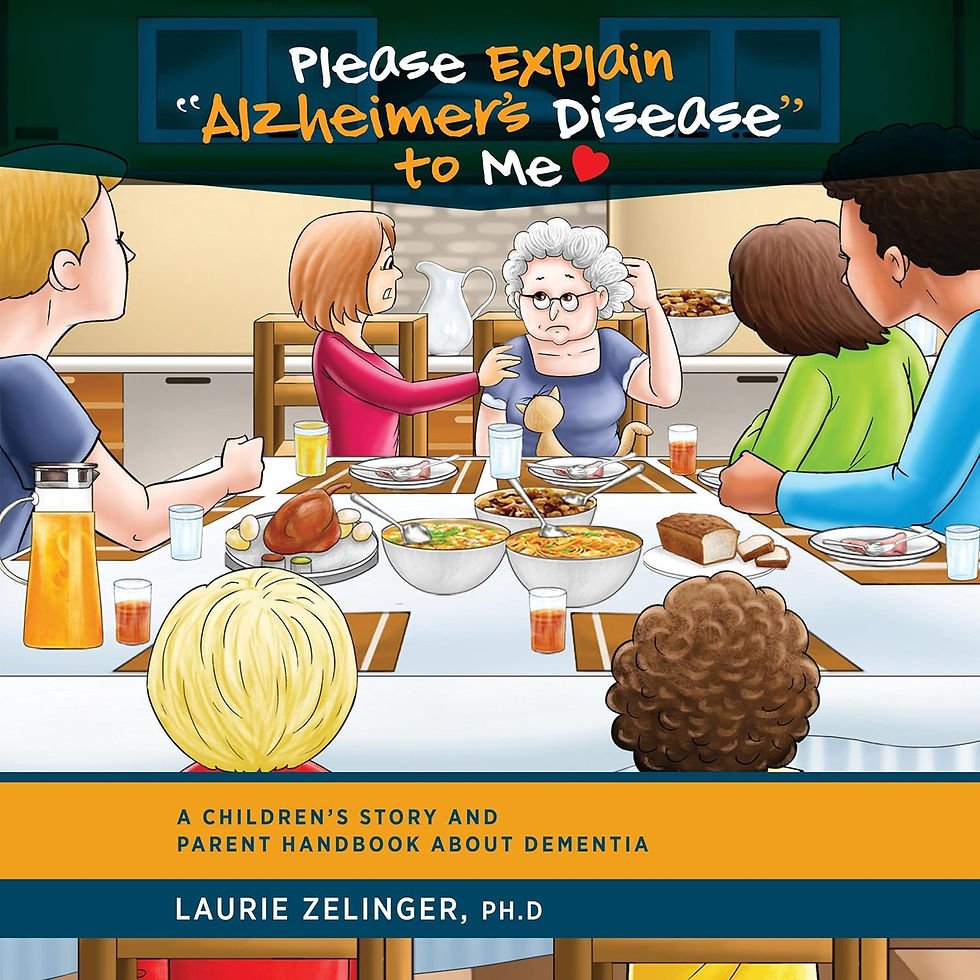
Please Explain “Alzheimer’s Disease” to Me by Laurie Zelinger is a thoughtful combination of children’s story and caregiver guide that helps families talk about dementia in a clear, compassionate way. Through the story of a young boy learning about his grandmother’s Alzheimer’s diagnosis, children are introduced to what memory loss looks like, why it happens, and how to stay connected even as things change. The second half of the book serves as a practical guide for parents and educators, offering tips and language to support kids emotionally while navigating this challenging topic.
What’s Happening to Grandpa? by Maria Shriver: In this story, a young boy named Katey begins noticing changes in his grandfather’s behavior—forgetfulness, confusion, and moments of disconnection. As his family explains that Grandpa has Alzheimer’s disease, Katey learns what that means and how he can still share loving moments with him. The book provides a developmentally appropriate and reassuring explanation of Alzheimer’s while emphasizing the importance of empathy, patience, and the power of shared memories. A helpful section for parents and caregivers is also included to guide conversations.
Always My Grandpa by Linda Scacco: This lt story follows Daniel, a young boy who learns that his beloved Grandpa has Alzheimer’s disease. As Daniel observes his grandfather’s memory lapses and mood shifts, he struggles with confusion and sadness. But with guidance from his family, Daniel discovers ways to stay connected through simple routines and shared activities.
Wilfrid Gordon McDonald Partridge by Mem Fox: This book tells the story of a young boy named Wilfrid who lives next to a retirement home and shares a special bond with Miss Nancy, who is losing her memory. When he hears that she’s forgotten things, Wilfrid sets out to understand what “a memory” is by asking others and collecting items that might help her remember. This story doesn’t name Alzheimer’s explicitly, but it’s a beautiful way to open up conversations about aging and memory loss.

Talking to Kids About Divorce or Separation
Children often blame themselves for divorce, so one of the most important messages to communicate is that it is not their fault. Emphasize that both parents still love them, and it is okay to feel a wide range of emotions. Visuals and storybooks can help children understand new living arrangements or family structures. Try to maintain routines and validate their feelings along the way.
What kids need to hear when their parents are divorcing or separating
“Mom and Dad both love you so much, but we’ve decided to live in different homes.”
“You didn’t do anything to cause this. It’s not your fault.”
“It’s okay to miss both of us and to feel different things on different days.”
“We’re still your family, just in a new way.”
“You can always ask questions, and we’ll do our best to help you understand.”
“Even though things are changing, our love for you never will.”
Tips for helping kids with a parent's separation or divorce
Emphasize the child is loved by both parents
Reassure them the divorce is not their fault
Use storybooks and visuals to help explain changes
Normalize big emotions and create safe routines
Kids books about divorce or separation
Dinosaur’s Divorce by Marc Brown and Laurie Krasny Brown: This nonfiction-style picture book uses dinosaur characters to walk children through the emotional and logistical changes that can come with divorce. With a clear, straightforward tone, the book explains complex concepts like custody arrangements, stepfamilies, and parental disagreements in a way that young children can easily grasp. It normalizes the wide range of feelings kids may have and reassures them that they are not alone. Each section stands on its own, making it a helpful conversation starter for parents and counselors navigating these tough topics.
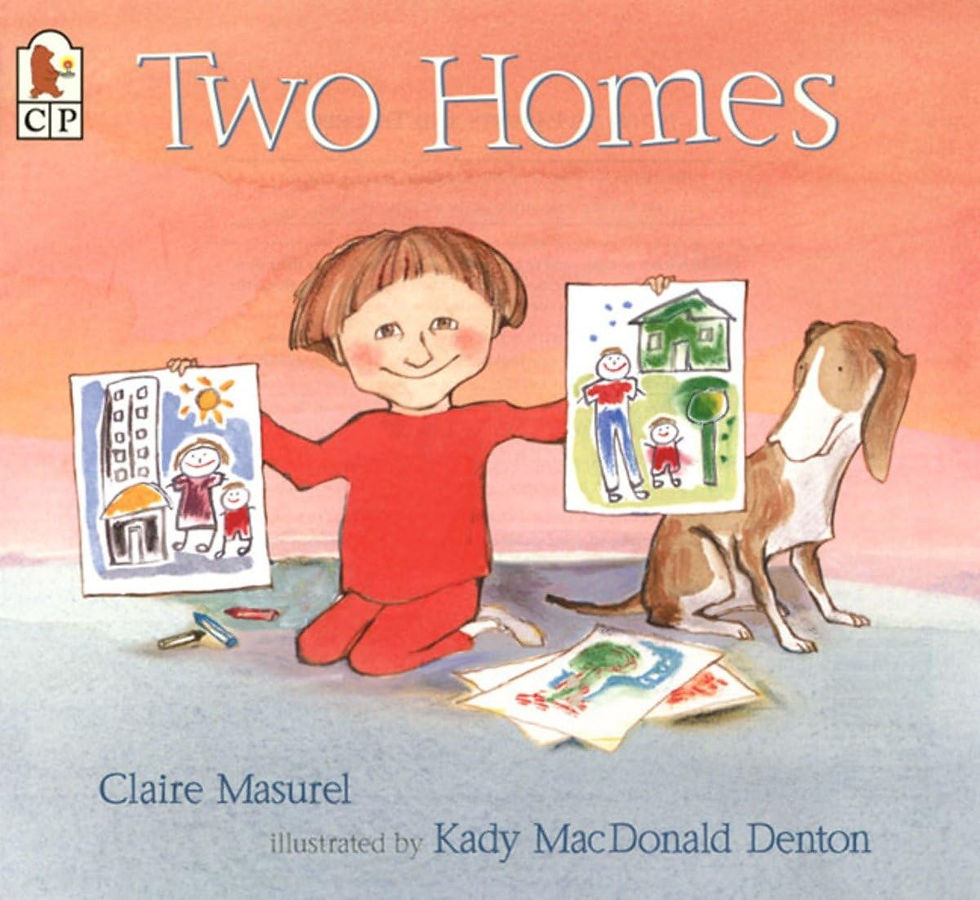
Two Homes by Claire Masurel, illustrated by Kady MacDonald Denton: In this story, a young child named Alex introduces readers to his two loving homes, one with Mommy and one with Daddy. Rather than focusing on the conflict or sadness surrounding divorce, the book emphasizes stability, love, and consistency in both households. From two beds to two favorite chairs, the story validates the child’s experience and helps young readers focus on what remains the same and secure, even after big family changes.
It’s Not Your Fault, Koko Bear by Vicki Lansky, illustrated by Jane Prince: This story follows Koko Bear as she learns that her parents are getting a divorce and tries to understand the changes happening around her. Each page includes both story dialogue and a sidebar with tips for parents to reinforce the messages. The book addresses common emotional reactions like guilt, confusion, sadness, and anger, while repeatedly affirming that the divorce is not Koko’s fault.
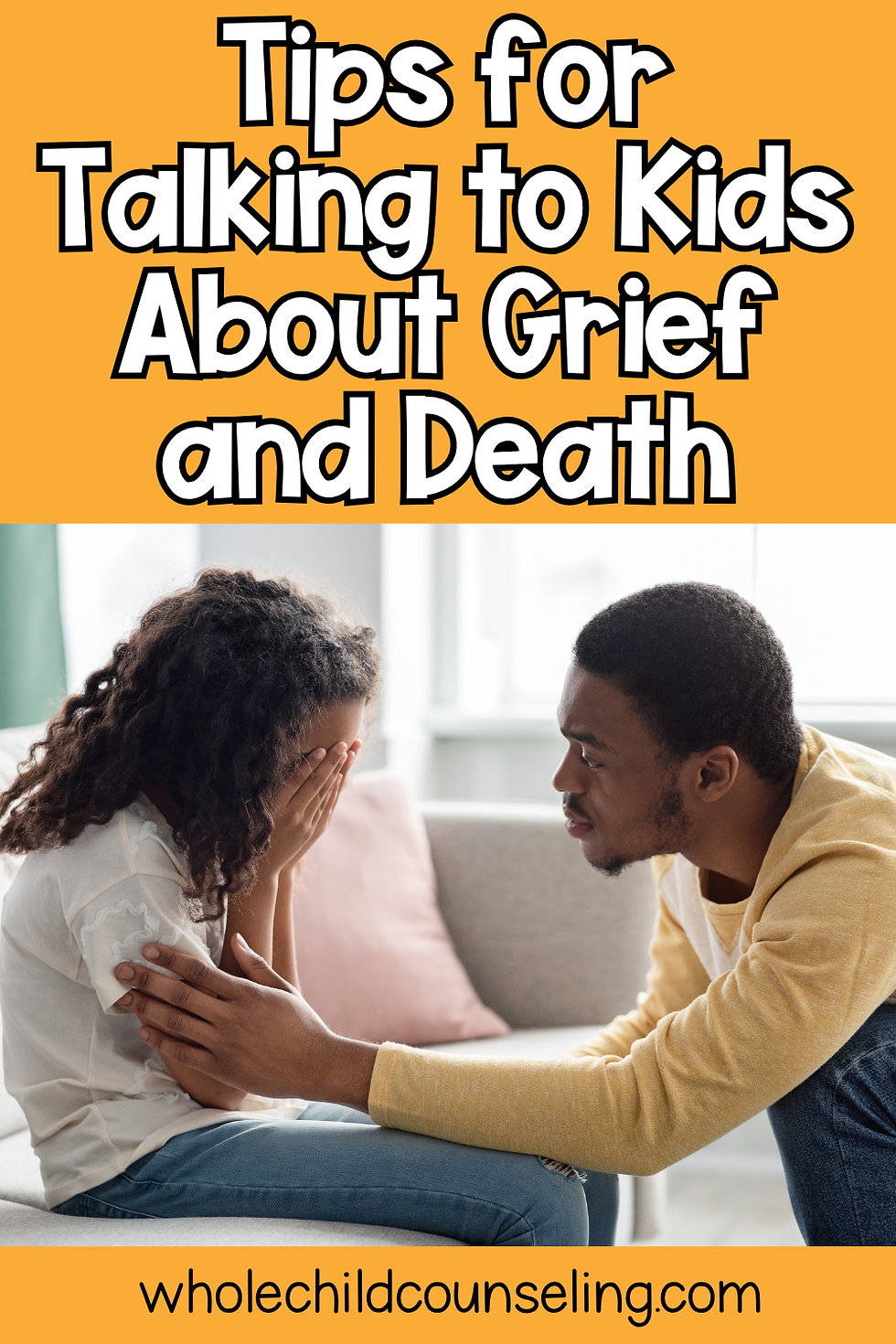
Talking to Kids About Grief and Loss
When a loved one dies, it is essential to use the words "death" and "died" to avoid confusion. Reassure children that all feelings are okay and there is no right or wrong way to grieve. Encourage them to talk, draw, or play as a way to express themselves. Let them know that love doesn’t disappear even after someone has died. I have lots more grief and loss resources for kids available here.
What grieving kids need to hear
“Grandma died. That means her body stopped working and she’s not alive anymore.”
“I miss him too. It’s okay to feel sad, mad, or confused.”
“Even though she’s not here, we can still remember her and feel love for her.”
“You can ask me anything about what happened.”
“Your feelings might change from day to day, and that’s totally okay.”
“We can find special ways to remember her together, like telling stories or looking at pictures.”
Tips for talking to kids about grief, loss, and death
Use the actual words like “death” and “died” (avoid euphemisms)
Let them express emotions in any way (crying, drawing, acting out)
Talk about how love doesn’t go away, even when people do
Revisit the conversation often
Kids books about grief, loss, and death
The Invisible String by Patrice Karst: This book is an all time fav of mine. It uses the metaphor of an invisible string to explain how love connects us to the people we care about, even when they are far away or have passed on. Whether someone has moved, is deployed, or has died, the story reassures children that the love between them and their loved ones is still present. Told through the eyes of twins comforted by their mother’s explanation, it offers gentle reassurance in times of grief, anxiety, and separation.
The Memory Box: A Book About Grief by Joanna Rowland, illustrated by Thea Baker: This heartfelt story follows a young child who creates a memory box to collect keepsakes and stories that remind her of a loved one who has died. The book explores a wide range of emotions that come with grief, including sadness, worry, and the fear of forgetting. Through reflection and creativity, the child finds comfort in honoring memories. The book includes a caregiver’s guide with supportive tips for talking about loss with children.
I Miss You: A First Look at Death by Pat Thomas, illustrated by Lesley Harker: This book offers a gentle and straightforward introduction to death for young children. It explains what death means, why it happens, and how children might feel when someone they love dies. The book encourages emotional expression and open dialogue by including questions and prompts throughout.

Talking to Children About School Shootings or Community Violence
When children are exposed to violence in their community, whether through the news, a school incident, or something close to home, it’s important to provide calm, honest guidance. Avoiding the topic can increase fear and confusion. Instead, offer reassurance, accurate information, and tools for emotional expression. Let kids know that feeling upset, scared, or angry is okay and that there are safe ways to process those feelings together.
Other helpful resources include The National Child Traumatic Stress Network which has a lot of helpful resources on shootings and traumatic events. The National Association of School Psychologists also has helpful information for talking to children about violence.
Tips for talking to kids about community violence
Validate children’s feelings and questions without minimizing or dismissing them.
Focus on safety and the people working to help.
Use books to explore feelings and provide a sense of hope or agency.
Remind them they are not alone and can talk to trusted adults.
What kids need to hear about community violence:
“Sometimes scary things happen in the world, and it’s okay to feel upset or worried.”
“You are safe, and there are grown-ups working to keep you safe.”
“It’s okay to talk about what happened and ask questions.”
“We can do things together that help us feel calm and connected.”
“Even when something bad happens, there are helpers and people trying to make things better.”
“You don’t have to go through this alone. I’m here with you.”
Kids books about community violence
A Kids Book About School Shootings by Crystal Woodman Miller: This is a direct yet compassionate resource designed to help children understand the reality of school shootings in a developmentally appropriate way. Written by a survivor of the Columbine tragedy, this book opens up a safe space for tough conversations by acknowledging children’s fears while empowering them with honesty and hope. The minimalist design and straightforward language make it approachable, and the book emphasizes emotional safety, adult support, and the importance of expressing feelings without shame or fear.
Something Happened in Our Town by Marianne Celano, Marietta Collins, and Ann Hazzard: This book follows two families, one Black and one White, as they talk about a police shooting in their town. It helps children process the event and understand concepts like fairness and advocacy.
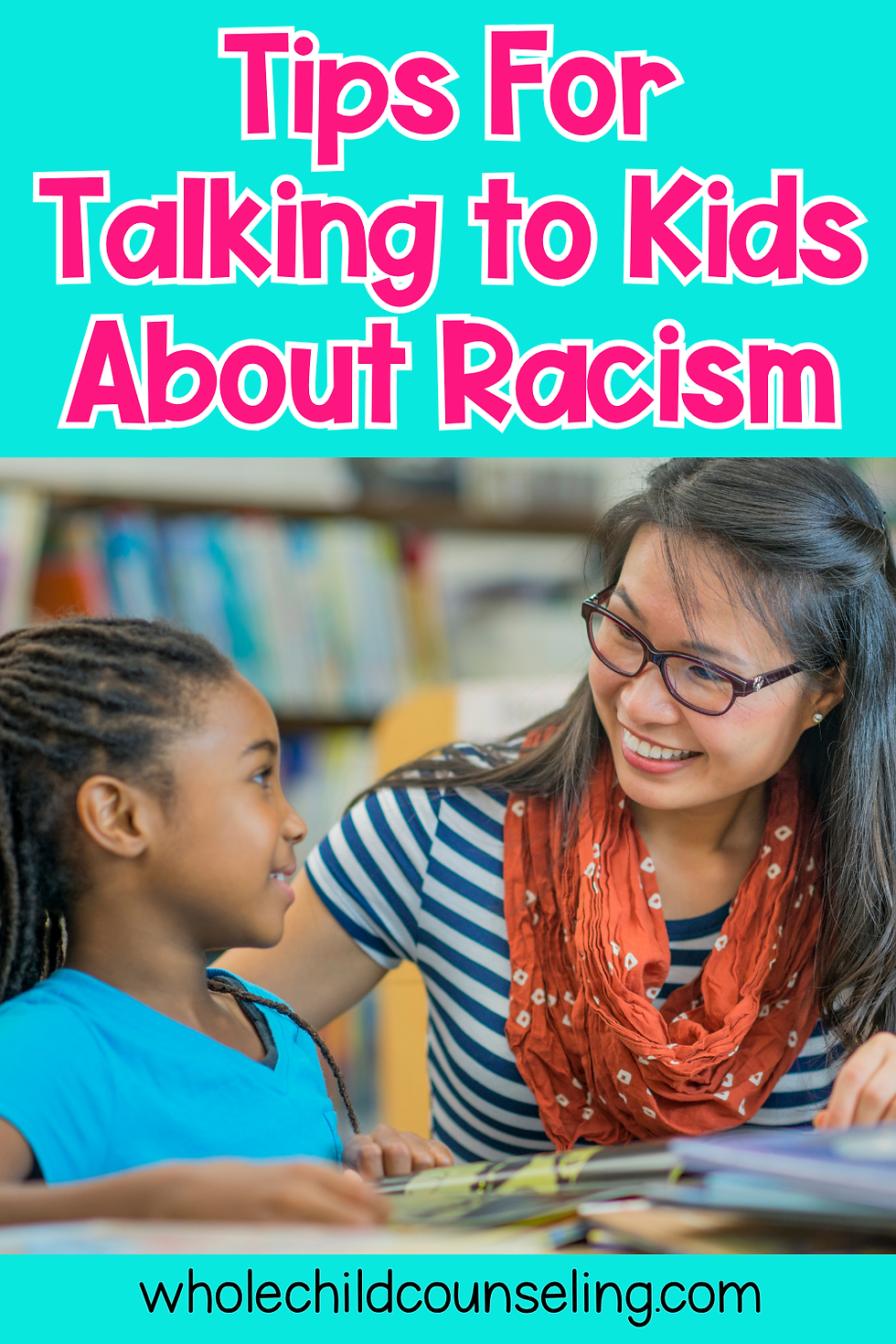
Talking to Kids About Racism
Children need honest, age-appropriate conversations about race and racism. Avoiding the topic can actually create more confusion or fear. Books can be an excellent springboard for these discussions, offering a safe, relatable way to process hard truths. When kids understand injustice, they’re better equipped to develop empathy, fairness, and courage to stand up for others. The goal is not to burden them with guilt or fear, but to nurture awareness, inclusion, and critical thinking. For more resources on racism, check out these blog posts.
What kids need to hear about racism
“Something unfair happened to someone in our community because of the color of their skin.”
“It’s okay to feel mad or confused. Those are big feelings, and we can talk about them.”
“We believe that everyone should be treated with kindness and respect.”
“We can be helpers by speaking up and showing fairness.”
“People have different skin colors and cultures, and that’s something to celebrate.”
“If you ever see someone being treated unfairly, you can tell a trusted adult. We can make a difference together.”
Tips for talking to kids about racism
Don’t avoid the topic. Kids notice differences and need help making sense of them.
Use storybooks as an entry point for honest conversation.
Name injustice when you see it, and emphasize standing up for others.
Focus on fairness, inclusion, and belonging.
Kids books on racism
Something Happened in Our Town by Marianne Celano, Marietta Collins, and Ann Hazzard: This book follows two families, one Black and one White, as they talk about a police shooting in their town. It helps children process the event and understand concepts like fairness and advocacy.
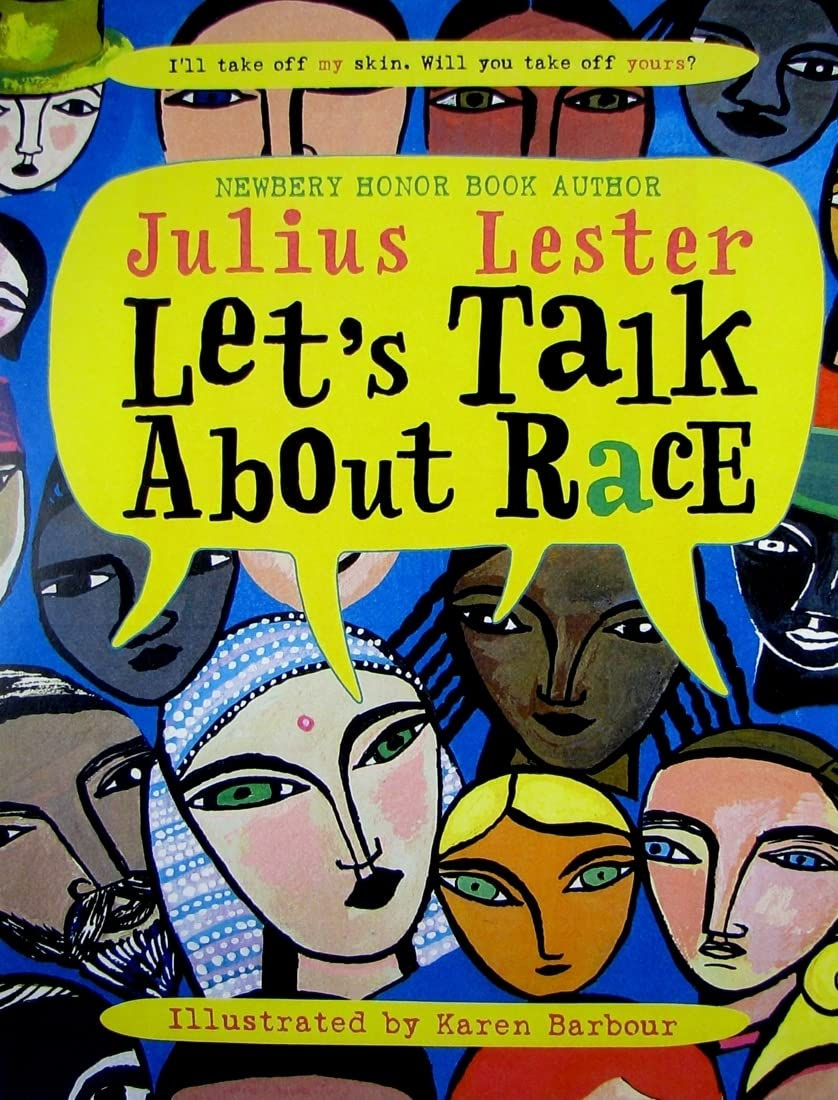
Let’s Talk About Race by Julius Lester: This picture book uses a conversational style to explain the concept of race in a way that is both accessible and meaningful for children. It encourages kids to explore what makes them who they are beyond skin color and helps them understand that while race is part of a person’s story, it does not define their whole identity. The book opens the door for thoughtful discussions about difference, fairness, and empathy.
Not My Idea by Anastasia Higginbotham: With its unique collage illustrations and direct storytelling, this book invites children to explore the realities of racism and white privilege in a way that is honest yet age-appropriate. It empowers young readers to recognize injustice and encourages them to think critically about what it means to be part of a fair and inclusive society. The book supports families in having important conversations about equity and doing what is right, even when it feels hard.

Talking to Kids About Natural Disasters (Floods, Fires, Tornadoes, Earthquakes, etc.)
Natural disasters can be deeply frightening, even if a child was not directly affected. Offer honest information with calm reassurance. Let them know the grownups are working to keep them safe. Involve them in small acts of preparedness to give them a sense of control. Acknowledge their fear and provide ongoing support. Ready Kids is a government website that helps kids make disaster preparedness plans. Bright Horizons has a helpful tipsheet for answering children's questions about natural disasters.
What kids need to hear about natural disasters (fires, floods, tornadoes, earthquakes etc.)
“A flood is when too much water comes in and can hurt homes and towns. That happened in some places, but you’re safe now.”
“Lots of helpers are working to fix things.”
“It’s okay to feel scared. Grown-ups are here to keep you safe.”
“You can ask questions or draw how you’re feeling.”
“Even if something scary happened, we’re together and that’s what matters most.”
“Let’s make a safety plan together so you know what to do if something like this happens again.”
Tips for talking to kids about natural disasters (fires, floods, tornadoes, earthquakes, hurricanes, etc.)
Provide honest explanations with reassurance
Let kids participate in safety planning (emergency kits, drills)
Reinforce that adults are keeping them safe
Acknowledge trauma even if they weren’t directly harmed
Kids books about natural disasters:
Birdie and the Earthquake is a free book by Queensland Government.
Birdie and the Flood is another free book by Queensland Government.
Birdie and the Shelter is another free book by Queensland Government.
Birdie and the Cyclone is another free book by Queensland Government.
Birdie and the Storm is another free book by Queensland Government.
Birdie and the Blizzard is another free book by Queensland Government.
Birdie and the Drought is another free book by Queensland Government.
Birdie and the Earthquake is another free book by Queensland Government.
Birdie and the Fire is another free book by Queensland Government.
Birdie and the Hurricane is another free book by Queensland Government.

Once I Was Very Very Scared by Chandra Ghosh Ippen: In this book, a group of animals talk about what scared them and how they are working through their feelings. It is excellent for validating a variety of emotional responses to trauma.
They Hold the Line by Dan Paley: is a gripping and beautifully illustrated nonfiction picture book that introduces young readers to the world of wildland firefighters. It explains the dangers of wildfires and the bravery, teamwork, and dedication it takes to fight them. Through dynamic illustrations and action-packed text, the book not only educates children about wildfire prevention and environmental responsibility but also celebrates the courage and resilience of those who protect our communities and natural spaces.

Talking to Kids About Domestic Violence
Domestic violence is one of the most difficult topics to talk about with children, but it is also one of the most important. Kids who witness or experience violence at home often carry big feelings like fear, shame, guilt, and confusion. Avoiding the topic can increase anxiety and leave children to make sense of things on their own.
By creating a safe space for open conversation, using age-appropriate language, and offering reassurance, caregivers can help children feel secure and begin to heal. Books can play a powerful role in helping kids understand that they are not alone and that their safety and feelings matter.
Tips for talking to kids about domestic violence
Reassure children that what happened is not their fault
Help them understand they are safe now and will be kept safe moving forward
Normalize a range of emotional responses, including anger, sadness, or confusion
Focus on trust and consistent routines that help them feel more secure
Let them know it is okay to ask questions and share their feelings at their own pace
If possible, connect them with a trusted counselor or support system
What kids need to hear about domestic violence
“What happened wasn’t your fault.”
“You are safe now, and we’re going to help keep you safe.”
“You can talk to me about anything, even scary things.”
“Your feelings are important and real.”
“There are people who care about you and want to help.”
“It’s okay to feel confused, scared, or angry. You’re not alone.”
Kids Books About Domestic Violence
A Place for Starr by Howard Schor: This story follows a young girl named Starr who must leave her home with her mother and siblings to escape domestic violence. Through Starr’s perspective, children see that it’s possible to find safety and begin healing in a new environment. The book balances realism with hope, showing that new beginnings are possible even after trauma.
Hear My Roar by Gillian Watts: This story centers on a child finding their voice and strength after experiencing domestic violence. It highlights themes of self-worth, courage, and recovery. The book offers emotional validation and encourages children to believe in their own ability to heal and grow, even in difficult circumstances.
Chameleon and the Color of Brave by Amanda Moore and Amanda Letcher: This story follows a young chameleon named Clyde who changes colors to match the emotions around him. Living in a home with domestic violence, Clyde feels confused, scared, and invisible. But with help and support, he begins to understand his feelings and discovers the "color of brave" inside himself. This metaphorical story empowers children to recognize their own emotions and reassures them that it's okay to ask for help.
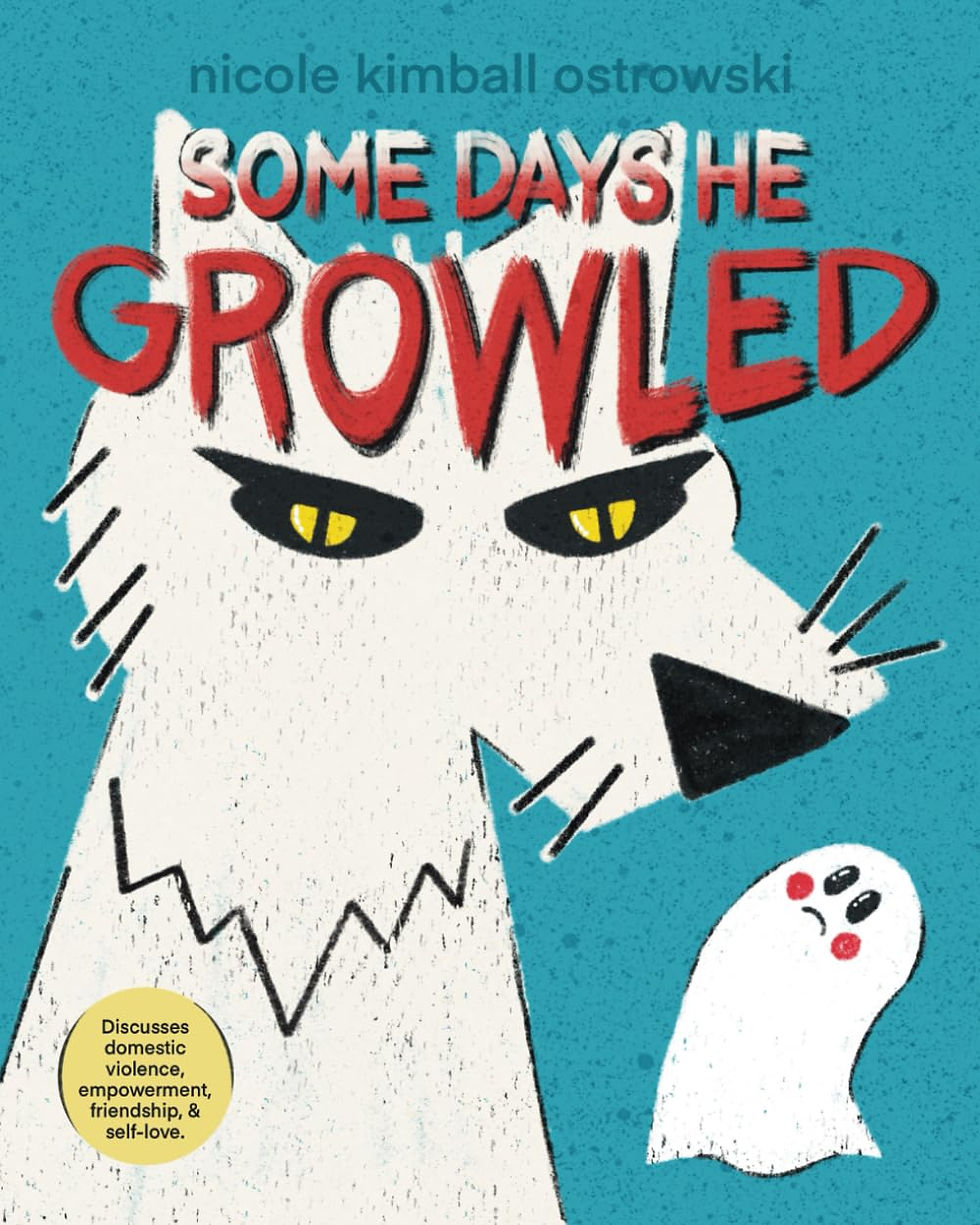
Some Days He Growled by Nicole Kimball Ostrowski: This book uses animal characters to explore the experience of living with an unpredictable and sometimes frightening adult. Through gentle storytelling, it addresses domestic violence in an age-appropriate way, emphasizing themes of self-love, friendship, and healing. The story helps children understand that they are not to blame for someone else's anger and that they deserve to feel safe and valued.

Talking to Kids About Substance Use and Addiction
When a parent or caregiver struggles with addiction, children often feel confused, scared, or even responsible. It’s essential to speak honestly without blame and reassure children that they are not at fault. Addiction is a disease, and just like any illness, it needs treatment. Using developmentally appropriate language and offering a safe space to express emotions can help children feel more secure and supported.
Tips for Talking to Kids About Substance Abuse and Addiction
Be truthful without blaming. Focus on the fact that addiction is an illness, not a choice.
Emphasize that the child didn’t cause it and cannot fix it.
Use simple, age-appropriate terms and examples.
Encourage expression of emotions through talking, drawing, or play.
Let them know it’s okay to ask questions, and you’ll always be honest and supportive.
What kids need to hear when a family member or parent has substance use or addiction problems
“Your dad has a sickness called addiction. It makes it hard for him to stop using drugs or alcohol.”
“You didn’t cause this, and you can’t fix it. But you can still feel all your feelings.”
“You’re not alone, and there are safe adults who want to support you.”
“Even when someone is struggling, they can still love you very much.”
“It’s okay to talk about this. I’ll always be honest with you.”
“You’re allowed to feel mad, sad, or confused. We can work through it together.”
Books for kids on substance abuse and addiction
My Dad Loves Me, My Dad Has a Disease by Claudia Black: This compassionate and straightforward book uses relatable language and illustrations to explain addiction as a disease. It helps children separate the behavior from the person, reinforcing that they are still loved even when a parent is struggling
An Elephant in the Living Room by Jill Hastings and Marion Typpo: Designed as a workbook, this resource gently walks children through the emotional confusion of living with addiction in the family. With journaling prompts and illustrations, it helps them explore their feelings and build coping tools.
When a Family Is in Trouble by Marge Heegaard: This book invites children to draw and write as they process the impact of addiction in their family. With simple language and therapeutic prompts, it gently introduces ideas like grief, loss of control, and confusing emotions. Designed to be illustrated by the child, it empowers young readers to express themselves creatively while learning they’re not alone.
A Sickness You Can’t See by Laura Washington: This story helps children understand addiction through relatable characters. It explains that some people have a sickness inside their minds or hearts that you can’t see, but it still affects how they act or feel.
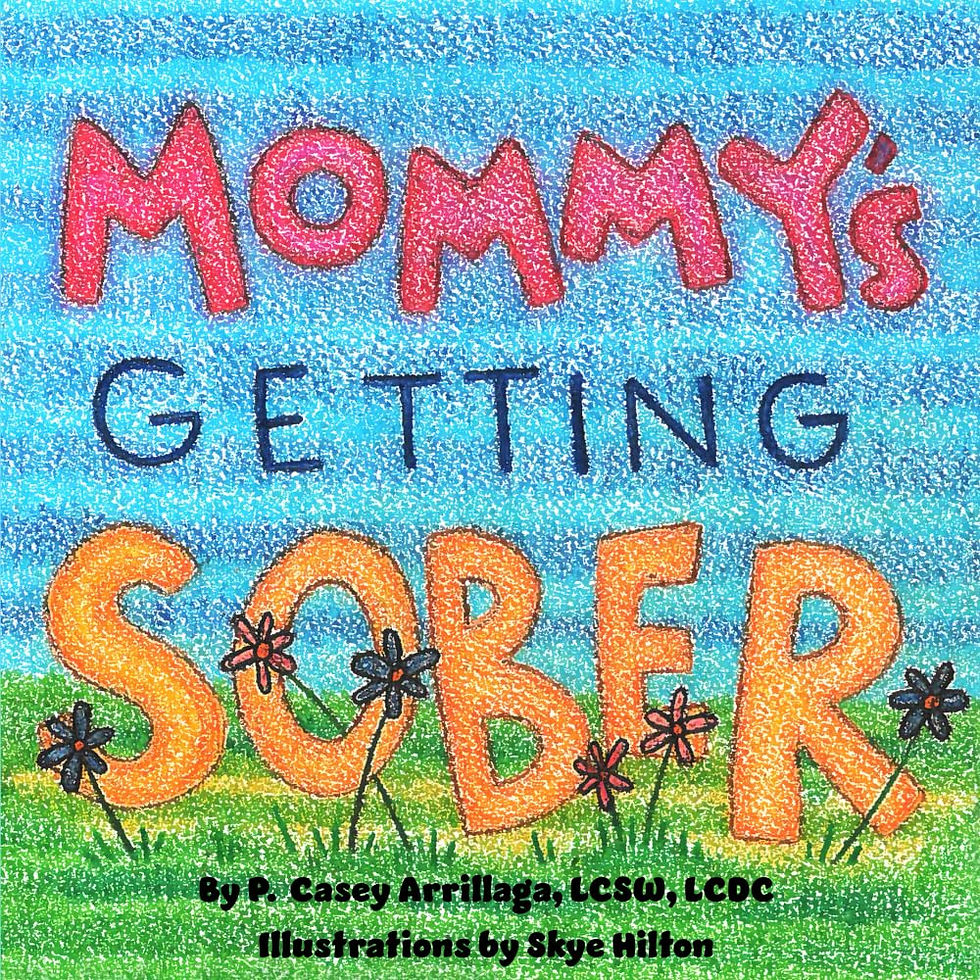
Mommy’s Getting Sober by P. Casey Arrillaga and Skye Hilton: This book follows a young child as they navigate their mother’s journey to sobriety. With child-centered language, it reassures children that recovery is possible and that their parent’s love hasn’t changed. It helps young readers understand both the challenges and the strength involved in getting sober, while normalizing conversations about addiction and healing.
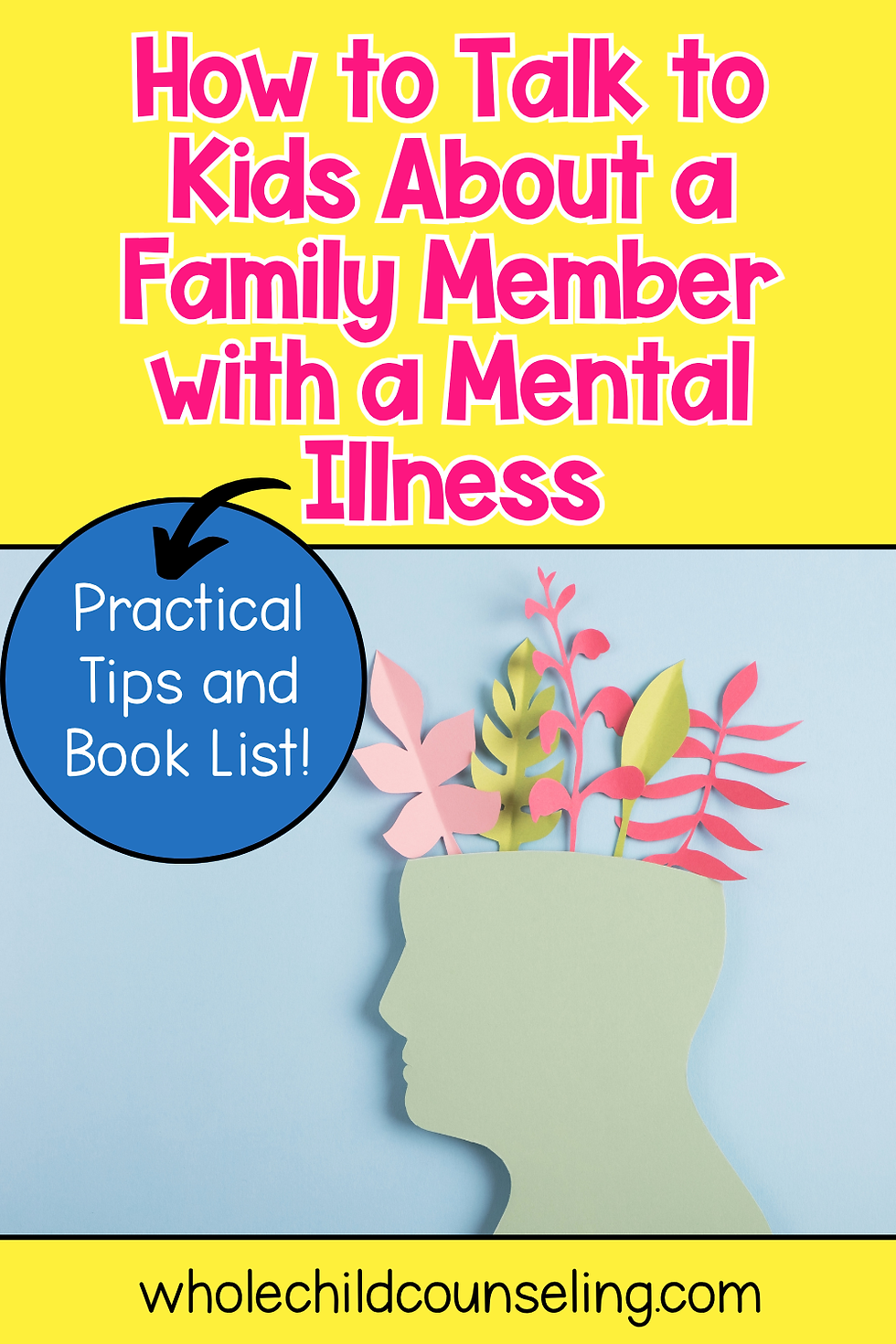
Talking to Kids About a Family Member with a Mental Illness
When a child has a family member who is struggling with a mental illness whether it’s anxiety, depression, bipolar disorder, or something else, it’s important to talk about it with clarity and compassion. Children may notice changes in behavior, mood, or routines and may even blame themselves. Honest, age-appropriate explanations help reduce confusion and shame while fostering empathy. Normalize mental health as part of overall health, and remind children that it’s okay to ask questions and express their feelings.
Tips for talking to kids about a family member with mental illness
Normalize talking about feelings and getting help
Use comparisons to physical health (e.g. "sometimes our brains need help too")
Reassure them it’s not their fault and they are not alone
Encourage emotional expression through drawing, play, or journaling
Be open to ongoing conversations as their understanding deepens
What kids need to hear when they have a family member with mental illness
“Sometimes our brains need help just like our bodies do.”
“When I feel really worried, I try to take deep breaths or talk to someone I trust.”
“It’s okay to feel sad or anxious, and you can always tell me when you do.”
“Mental illness is not your fault, and there are people who can help.”
“Even when someone is struggling and in the hospital and can't talk to you, they still love you.”
“You’re not alone, and there are grown-ups who can help you understand what’s happening.”
Kids books about family members with mental illness
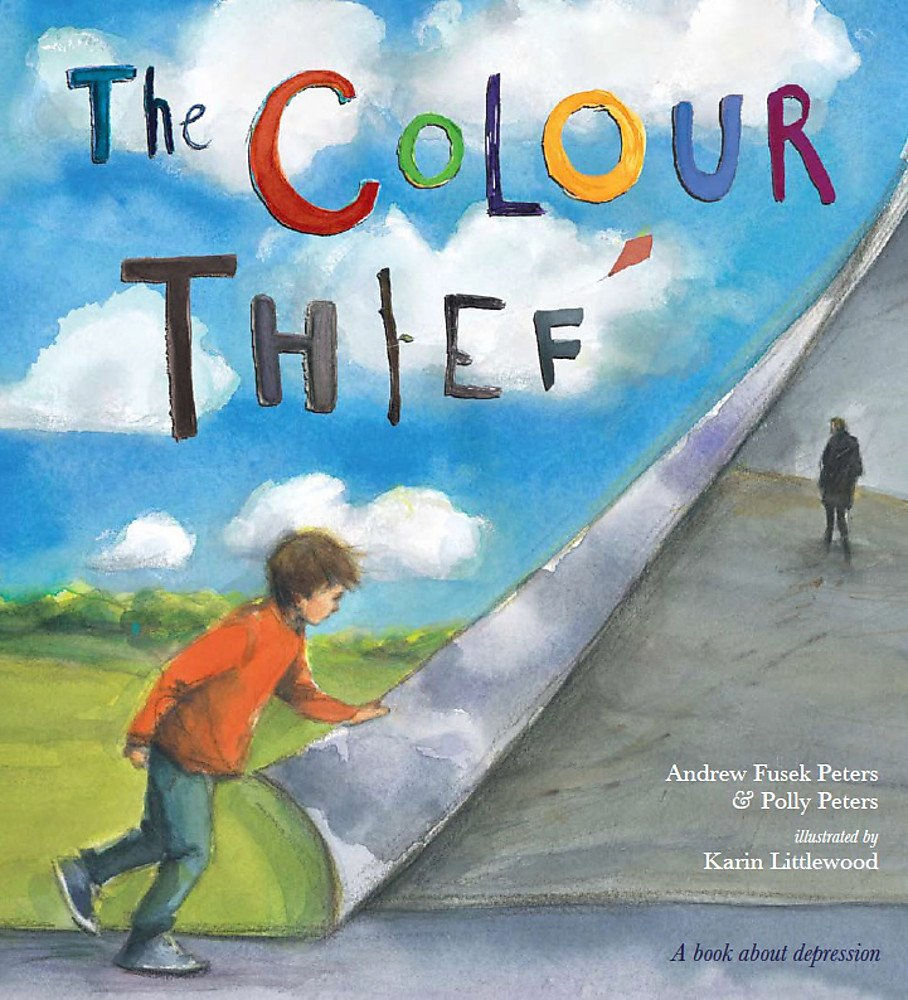
The Color Thief: A Family’s Story of Depression by Andrew Fusek Peters and Polly Peters: A story told through the eyes of a child whose father has depression. It explains how depression can make the world feel gray and how love and support can help bring the color back.
Sometimes My Mommy Gets Angry by Bebe Moore Campbell and E.B. Lewis: This story follows a young girl named Annie, whose mother struggles with mental illness. Annie navigates the confusion, fear, and unpredictability that sometimes come with her mom’s anger, but she learns coping strategies like seeking support from trusted adults, taking care of herself, and finding stability in her routines.
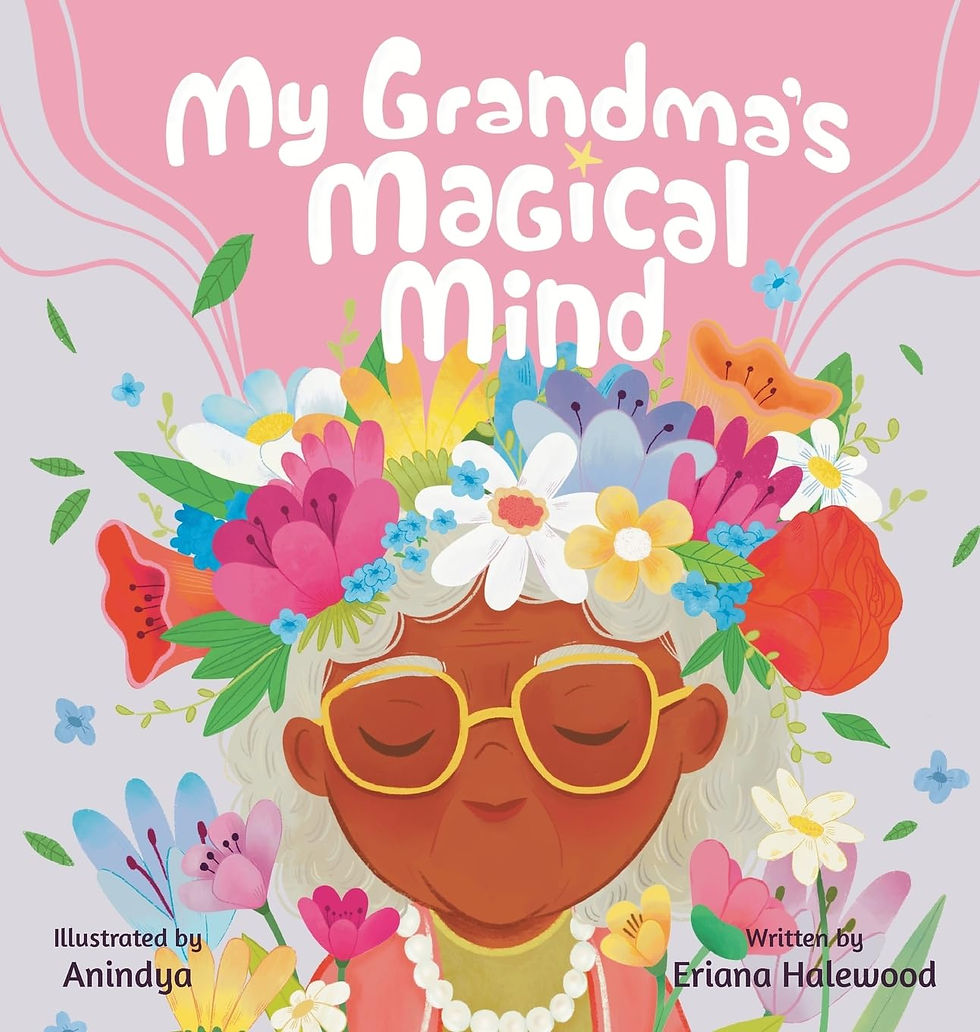
My Grandma’s Magical Mind by Eriana Halewood and AnindyaIn: A child explores their grandma’s unique way of thinking and behaving through a lens of imagination and love. Inspired by the author’s own family experiences, the book introduces mental illness with sensitivity and strength, showing how creativity, curiosity, and compassion can help children stay connected to a loved one who may see the world a little differently.
My Dad Has Bipolar I by Krista Morgan Eger: Told from a child’s perspective, this straightforward and approachable book explains what it’s like to have a parent with bipolar disorder. It balances honesty about the ups and downs of bipolar I with messages of love, understanding, and hope.

Talking to Kids About Military Deployment
Military deployment can bring up big feelings for children including sadness, worry, anger, and confusion. This is especially true when a parent or caregiver is suddenly gone for a long period. While it’s hard to say goodbye, kids can develop emotional tools to cope when they are given consistent routines, open communication, and ways to stay connected. Talking honestly (at their level), validating their emotions, and offering hopeful strategies can make a huge difference.
Tips for talking to kids about military deployment
Be clear and age-appropriate about where the deployed parent is and why.
Reassure them that they are still loved and thought about often.
Establish routines for connection (bedtime stories, countdown calendars, weekly check-ins).
Encourage kids to express their feelings through art, stories, or conversations.
Let them know it’s okay to miss someone and still enjoy things.
What to say to kids about military deployment
“Mom had to go far away for work because she’s helping keep people safe.”
“He still loves you and is thinking about you every day.”
“We can write letters, send drawings, or have video chats to stay connected.”
“Even when someone is far away, love keeps us connected.”
“It’s okay to feel sad or miss them. I feel that way sometimes too.”
“We’re still a family, even when one of us is far away.”
Kids books about military deployment
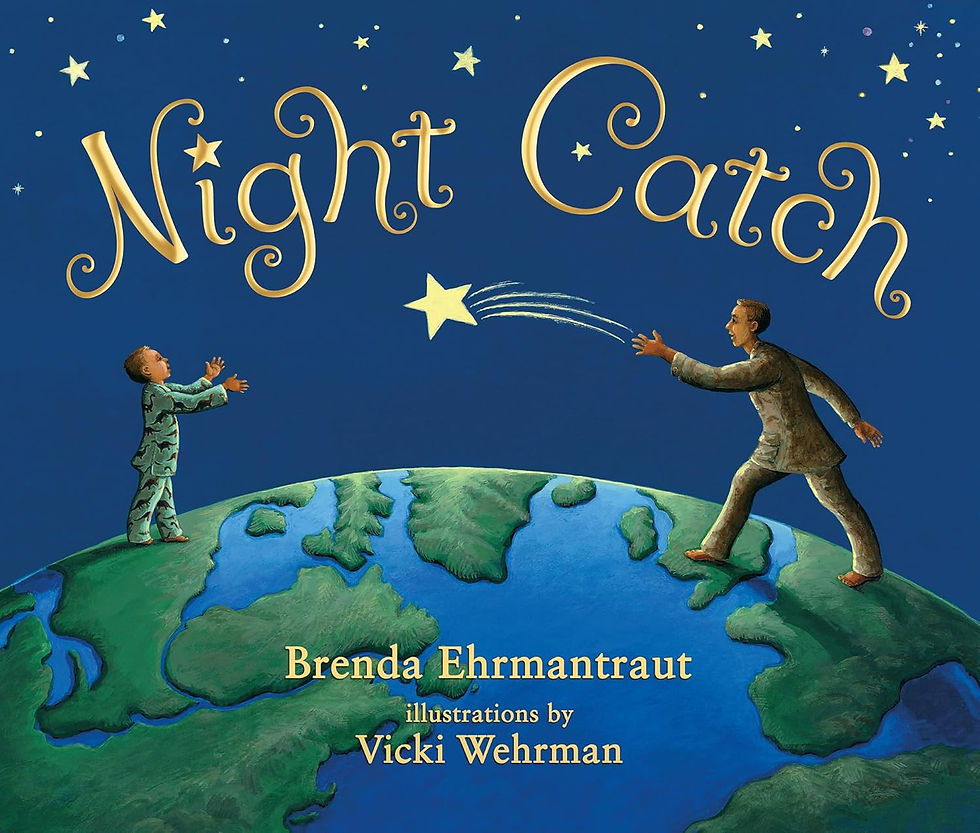
Night Catch by Brenda Ehrmantraut: This story features a deployed father and his son who use the stars to stay connected from across the world. It provides a comforting metaphor and bedtime ritual that children can hold onto while a parent is away. It’s especially helpful in maintaining emotional closeness across long distances.
Lily Hates Goodbyes by Jerilyn MarlerIn: In this relatable story, Lily struggles with saying goodbye to her dad, who leaves for military work. The book explores Lily’s full range of emotions and offers simple strategies and reassurance to help children cope with repeated separations. It’s honest and validating for military families.
The Invisible String by Patrice Karst: While not written specifically for military deployment, this beloved book introduces the concept of an “invisible string” of love that connects people no matter how far apart they are. It is a soothing way to remind children that love remains strong across any distance.

Talking to Kids About Moving and Going to a New School
Moving can bring up a swirl of emotions for kids including excitement, anxiety, sadness, even anger. Whether you're heading across town or across the country, a move often means changes in routines, friendships, and familiarity. Talking openly about the transition helps children feel safe and seen. Acknowledge both the hard and the hopeful parts, and use books to spark helpful conversations about what’s to come.
Tips for supporting kids through a move
Acknowledge both excitement and sadness as valid feelings.
Allow time and space to grieve old friends, routines, or places.
Reassure kids that they will make new connections, even if it takes time.
Establish new routines quickly to provide comfort and predictability.
Keep kids involved in small choices, like decorating their new room or choosing a backpack.
What kids who are moving and going to a new school need to hear
“We’re moving to a new home, and that means a new school too.”
“It’s okay to feel excited and nervous at the same time.”
“We can make a plan to stay in touch with old friends and meet new ones.”
“Even if things feel different at first, we’ll figure it out together.”
“You can ask me anything about the move, even the hard stuff.”
“Making new friends takes time, and I’ll be here to help along the way.”
Books for kids about moving and going to a new school
Goodbye House, Hello House by Margaret Wild: This book follows a child as they say goodbye to each part of their old home, honoring memories before embracing what comes next. It’s a beautiful way to help children process the emotions of leaving while building hope for their new environment.
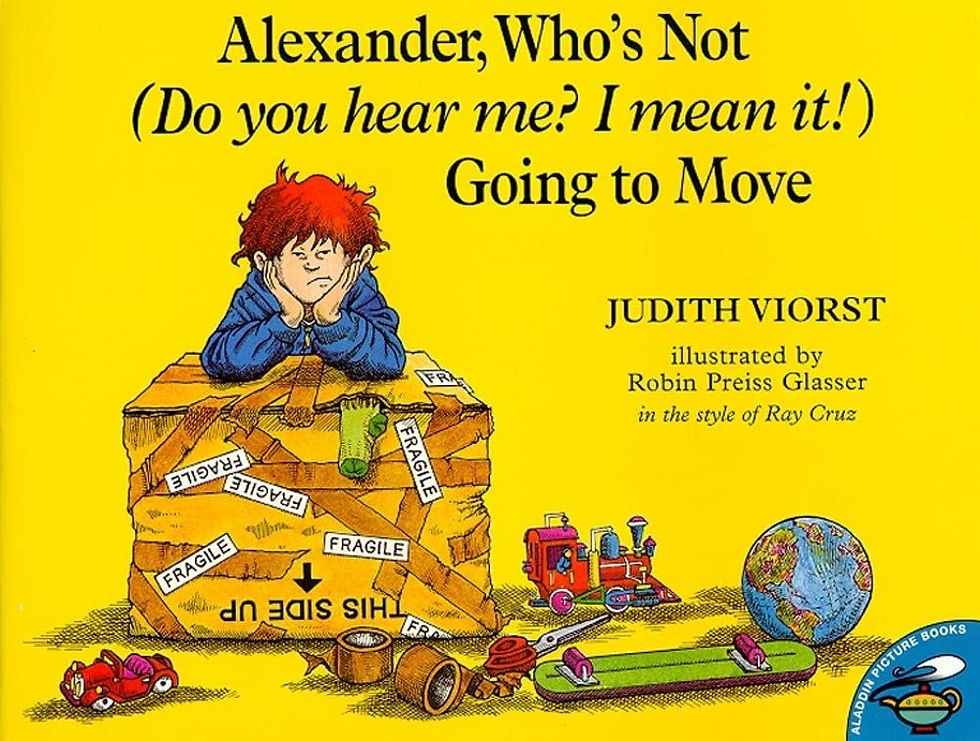
Alexander, Who's Not (Do You Hear Me? I Mean It!) Going to Move by Judith Viorst: Alexander is not happy about moving and he lets everyone know it. This funny story gives kids permission to feel grumpy, worried, or stubborn about big life changes, and it gently shows how those feelings can shift over time.
Big Ernie’s New Home by Teresa and Whitney Martin: This story follows Big Ernie, a cat who has to leave behind everything he knows when he and his owner move. The book is particularly useful for young children, normalizing feelings of confusion and helping kids build resilience in a new environment.
Kids don’t need perfect answers. They need honesty, love, and safe places to feel all their feelings. Whether you're a counselor, social worker, or teacher supporting students through transitions or a parent navigating tough times, books can offer language, comfort, and connection. Keep the conversations open. Revisit them often. And remember: healing begins with being heard.
How to Talk to Kids About Difficult Topics by Supporting Families with Editable Letters and Handouts
If you're a counselor, social worker, or psychologist and you want editable handouts and letter templates for helping parents with challenging topics. You can use any of the tips from this blog and customize the letters and handouts for your families. Or you can use the pre-made templates, whether it’s a child struggling with depression, anxiety, or self-abusive behaviors like cutting, this Counselor and Mental Health Letters Templates Forms and Handouts Bundle has everything you need to save you time and enhance effective parent communication.
This extensive bundle offers a variety of editable parent resources, making it simple to customize letters, handouts, forms, and tip sheets. Here’s what you can expect:
Family Letters: Keep parents informed with ready-made, editable letters.
Tip and Resource Sheets: Provide valuable advice and resources on child development and mental health.
Surveys: Gather essential feedback from families to better support their needs.
Community Resources: Share local resources that can offer additional support.
Permission Slips: Simplify the process of obtaining necessary permissions.
Lists and Releases: Streamline your documentation with organized lists and release forms.
Mental Health Handouts: Offer informative handouts on various mental health topics.
SEL Educational Updates: Inform parents about what their children are learning with you.
Benefits for Counselors, Social Workers, and Psychologists
This bundle is a game-changer for professionals in the field of child development and mental health. Here’s why:
Time-Saving: Spend less time on documentation and more time on direct support.
Enhanced Communication: Improve communication with parents effortlessly.
Customizable: Easily tailor the templates to fit your specific needs.
Comprehensive: Access a wide range of resources in one convenient package.
With this bundle, you’ll have everything you need to efficiently support families and their children's development. Whether you're a counselor, social worker, or psychologist, this set will save you valuable time and enhance your ability to provide effective support.
I'm so confident you will love this bundle, I am offering you a free sample here which includes:
Separation Anxiety Tips and Resources 3 Page Editable Handout
Editable We're Learning About Expected Choices Parent Letter
Editable Welcome Back to School Letter
To get this freebie, if you are already an email subscriber, just head to my free SEL resource library. If you're not yet a subscriber, you can sign up here.






































